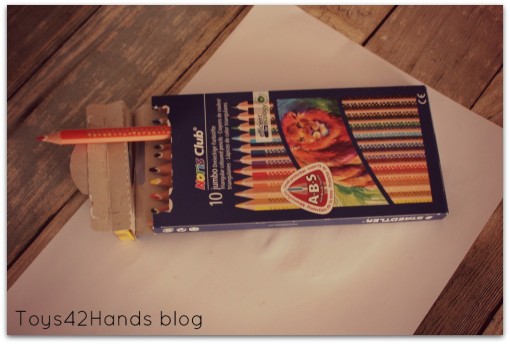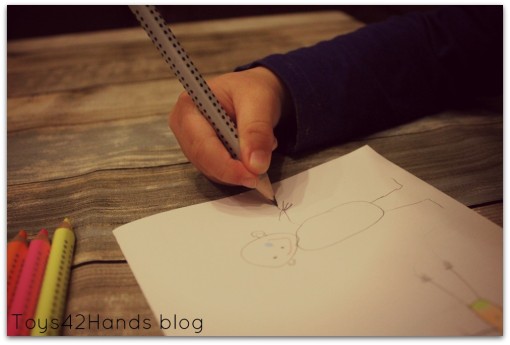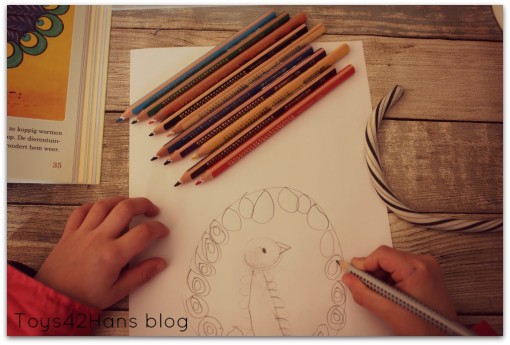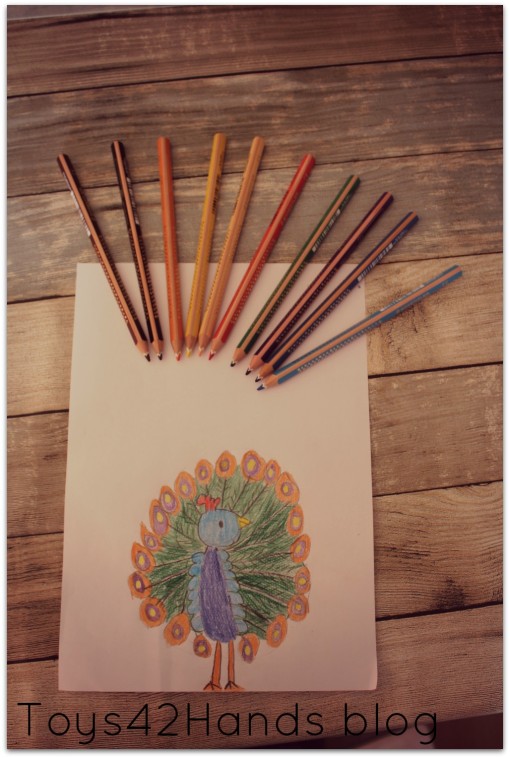Preschoolers: drawing with triangle colored pencils
Author: Marieke la Verge
Pediatric exercise therapist and founder of Beweegwereld
From the very first scratches to indefinable figures to the first 'I' drawings. Your child's drawing skills develop rapidly in the first few years. If your child has little interest and/or talent for drawing and colouring, it is smart to create a stimulating environment for your child. Why and how to do that, you can read here.
Drawing is a great way to express your creativity. To see and experience how something almost automatically comes into being on such a beautiful white paper by your own hand. Young toddlers experience this very strongly. That is why some children have a preference for dark colours for a long time and colour in large areas with them. Not because they do not like cheerful colours but because black simply gives a lot and fast result. As your child gets older, he or she will increasingly recognise, name and use more colours. That does not mean that a sun must always be yellow or the grass cannot be red. Toddlers still live wonderfully in their fantasy and anything is possible there! By drawing, a child develops fine motor skills. This is important for learning to write, for example. The child learns to move and control the hand and fingers better and better, so that the drawings take on more shape and the colouring becomes more accurate.
Encourage your child to hold a pencil correctly from an early age. After all, if you don't learn it wrong, you don't have to unlearn it. With a good pencil grip, the thumb and index finger grasp the pencil together, the middle finger supports the pencil: the three-point grip. Coloured pencils in a triangular shape stimulate the pencil grip. The child can place a finger on each side of the pencil. Good triangular pencils are available from Staedtler and Stabilo, for example.
Maybe your child would like to draw but has no idea where to start. Then you can draw something step by step that your toddler can copy. There are also fun 'I learn to draw' books for sale. If children have a guideline on how something is put together, they sometimes dare and surprise themselves. One child will follow all the steps carefully and the drawing 'must' be exactly like the example. Others are happy with the setup and then give it their own twist. Everything is allowed and they learn from every drawing.
Some children prefer colouring in more than drawing. That's fine, because there are plenty of colouring books for sale and you can print them out yourself. For a toddler, a whole colouring page is often too much to handle. They colour a piece and then continue with a new colouring page. Motivate your child to colour in a piece of the same colouring page every day so that a complete image is created after a few days. The result will amaze your child and can be an incentive to complete a colouring page more often. Does your child find it difficult to stay between the lines when colouring in and would he or she like to learn this? Then you can define the lines of the drawing with Twisty Sticks. This way, your child feels where the line is and can change direction.
Finally; children who rarely draw and color by themselves often want to make something beautiful for others. So seize every opportunity; from a birthday grandpa to a sick neighbor, to make something beautiful together. Express your appreciation for the hard work and give the artworks a nice place.












































Leave a comment